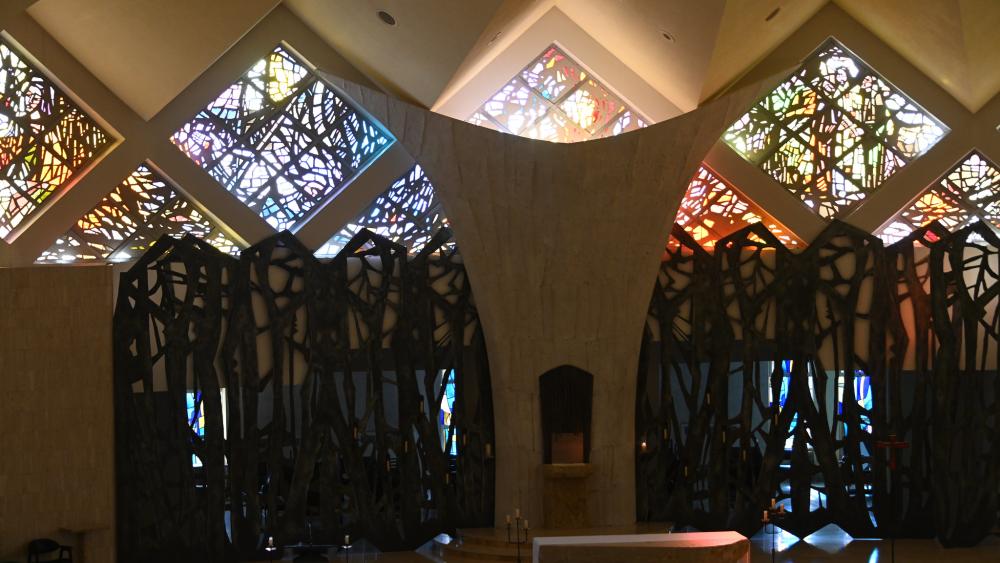‘That Which Delights Upon Being Seen’

BY JOHN DECOSTANZA, INTERIM VICE PRESIDENT FOR MISSION AND MINISTRY
More than a century ago, Mother Samuel Coughlin, OP resisted Archbishop Mundelein’s admonishment that the “River Forest property of which you speak is entirely out of the question.” She had two reasons — beauty and contemplation, integral parts of a Dominican education.
In a recent issue of U.S. Catholic Historian dedicated to Dominican history, Dr. Chris Allison’s analysis of Mother Samuel’s resistance points to the deep spiritual well from which our charism draws. St. Thomas Aquinas, OP, he writes, had a “pithy definition of beauty, id quod visum placet (that which pleases/delights upon being seen). [This] resulted in a liturgical and architectural expression that sought to create beauty to delight…in truth and soul.”
Beauty and delight were the reason for the selection of the location for what is now Dominican University. Beauty and delight were also the reason that Mother Samuel and the Sinsinawa Dominicans contracted with Ralph Adams Cram to design Rosary College on the site 100 years ago. Cram had a penchant for Gothic design and his beautiful buildings also grace the campuses of Princeton, Rice, the University of Chicago and Fourth Presbyterian Church near Water Tower Place.
Beauty and delight are the inevitable experiences of one who enters Queen of the Rosary Chapel, the crown jewel of the “1964 Building” at the Sinsinawa Mound. The beautiful windows, designed by Sr. Teresita Kelly, OP, are oriented east to west. They tell the story of God’s saving presence in history through the light of the sun from its rising to its setting. In the words of Sr. Mary Paynter, OP, “Because of the windows, the chapel preaches!”
Like the light in Queen of the Rosary, the Sinsinawa Dominican Sisters continue to preach with and for us even and especially in moments of change. There are fewer Sisters and the physical plant at the Mound, which was built for a much larger congregation, has become costly to maintain. The Leadership Council has planned prudently and engaged every Sister in some stage of the discernment process about the responsible stewardship of land and building at the Mound. Earlier this year, the Sisters contracted with a real estate firm that would help them to identify partnership opportunities for the use of the cherished buildings and campus. Recently, two interested parties have emerged to assume use of and responsibility for the 1964 buildings. The Leadership Council remains attentive to the close alignment with the mission of the Order and the Guiding Principles of the congregation.
The Sisters will continue to live, work and be missioned from Sinsinawa. As furnishings, artwork and other pieces of the heritage are moved from these buildings, conversations are occurring with sponsored institutions, like Dominican University, to determine which artifacts might best continue to tell the story and promote the mission in new homes.
“These are days of tremendous change and adaptation for us and for the Sinsinawa Mound itself, and in the midst of it all is both joy and sorrow,” said Sr. Judy Schaefer, OP, Sponsor’s Council Liaison for Dominican University.
The art and artistry of the Sinsinawa Dominican Sisters was never solely nor primarily expressed in art and architecture, but in their accompaniment of and example for each one of us.
As Sr. Judy assures us, “Our faith assures us that God is with us in these changes, and that the mission will continue. The Sisters are doing all they can to assure this continues both at Sinsinawa and in our sponsored institutions.”